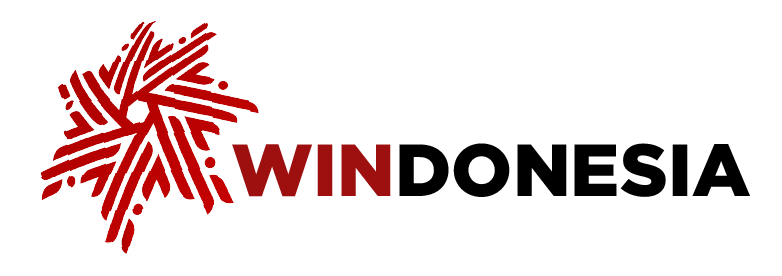Sector
Mining
Indonesia, a country rich in natural resources, boasts a mining sector that is undeniably one of its leading sectors. With vast reserves of mineral and non-mineral mining resources, the country stands as a global powerhouse in the mining industry. As of 2022, Indonesia’s mining industry contributed Rp2.3 quadrillion to the national GDP, accounting for 12.22 percent.
View moreMining
Indonesia, a country rich in natural resources, boasts a mining sector that is undeniably one of its leading sectors. With vast reserves of mineral and non-mineral mining resources, the country stands as a global powerhouse in the mining industry. As of 2022, Indonesia’s mining industry contributed Rp2.3 quadrillion to the national GDP, accounting for 12.22 percent.
Mining flourishes across various regions of the country, each contributing to the nation’s economy. It is present in regions such as South Sumatra, Riau, Riau Islands, Bangka-Belitung, Central Kalimantan, East Kalimantan, South Kalimantan, and North Kalimantan. Additionally, mining is also prevalent in Southeast Sulawesi, Central Sulawesi, West Nusa Tenggara, North Maluku, Papua, and West Papua.
Indonesia’s wealth of mineral resources offers a wide variety of materials available for mining. From abundant reserves of gold, bauxite, tin, and copper concentrates to nickel ore, the country’s rich mineral resources signify significant potential for economic growth and development. In addition, Indonesia is also rich in coal mining, with its abundant coal reserves catering to the energy needs of both domestic and international markets.
The country's mining sector thrives on these resources. In 2023, mineral resources such as bauxite reached a production of 28 million tons, gold at 85 thousand kilograms, tin concentrate at 57 thousand metric tons, copper concentrate at 3 million metric tons, along with nickel ore at 98 million metric tons.3 Meanwhile, Indonesia’s coal production reached 775.2 million tons in 2023, almost double than ten years earlier when coal production stood at 421 million tons.
Additionally, Indonesia is home to oil and gas exploration and exploitation, although its output has been dwindling. Once an exporting country of oil and gas, Indonesia has transitioned into a net importer of these commodities since 2008 when consumption surpassed outputs, which stood at around 1 million barrels per day (bpd). In the first semester of 2023, Indonesia’s oil output stood at 615 bpd.
Subsequently, the government has worked hard to reverse the trend of falling oil output and has set a target to restore oil lifting to 1 million bpd in 2030, alongside a gas production target of 12 billion standard cubic feet per day (BSCFD). As of January 2023, Indonesia’s documented oil reserves were 2.41 billion barrels, and its natural gas reserves stood at 35.5 trillion cubic feet.
As for investments, Indonesia secured US$30.3 billion for the energy and mining sector in 2023, marking an 11 percent increase from the previous year. That same year, the oil and gas sector led the way,
achieving US$15.6 billion in investments, followed by mineral and coal at US$7.46 billion, electricity at US$5.8 billion, and renewable energy at US$1.5 billion.
Latest News
Indonesia may face a tax revenue shortfall this year, as recent data show the country had realized only 74.62 percent of its annual tax target as of November, underscoring mounting difficulties in sustaining revenue growth amid global and domestic economic headwinds. The World Bank Group (WBG) has projected Indonesia's tax ratio, the share of tax revenue in gross domestic product (GDP), to fall to 9.4 percent in 2025, down from 10.1 percent in 2024. The downward trend is a worrying signal for future state spending, particularly as the government rolls out costly flagship programs that risk widening the fiscal deficit.
The Finance Ministry reported that tax revenue realization reached Rp 1.63 quadrillion (US$97.62 billion) as of November 2025, well below the Rp 2.19 quadrillion target set in the 2025 state budget. This underperformance occurred despite gross tax revenue rising 1.9 percent year on year, as higher VAT restitution and other adjustments pushed net tax revenue growth into a 3.25 percent contraction.
The revenue weakness is also reflected in the World Bank's latest outlook, which projects Indonesia's tax ratio to remain in single-digit territory at 9.4 percent in 2025 and 9.7 percent in 2026. The declining tax ratio is expected to weigh on overall state revenue, prompting the government to raise its fiscal deficit projection to 2.8 percent of GDP, edging closer to the 3 percent legal ceiling stipulated in Indonesia's fiscal rules.
The Supreme Audit Agency (BPK) has identified several structural and administrative factors contributing to the tax shortfall. First, Government Regulation (PP) No. 14/1997 contains a loophole that allows capital gains from shares traded on the negotiated market to be taxed at prices below prevailing market values, eroding potential revenue. Second, PP No. 49/2022 permits input VAT in coal mining activities to remain creditable while most coal output, largely export-oriented, is subject to a zero VAT rate, resulting in chronic VAT overpayments and rising restitution claims. Third, the Directorate General of Taxes' information system is unable to directly detect discrepancies between VAT and income tax payment data and taxpayer and withholding agent reports, delaying the realization of Rp 6.12 trillion in VAT and Rp 85.13 billion in income tax.
To mitigate the potential shortfall, Finance Minister Purbaya Yudhi Sadewa said the government was considering front-loading tax collection, a measure previously applied to Article 25 Income Tax (PPh 25) in 2017, which shifted future tax payments into the current fiscal year. However, business groups have criticized the proposal for risking liquidity pressures that could dampen economic activity. Several analysts have also warned that front-loading could distort the 2025 tax base and weigh on revenue performance in 2026.
In parallel, the Finance Ministry has rolled out measures to keep the 2025 budget deficit below the 3 percent threshold. Purbaya said the government has channeled Rp 200 trillion in excess state funds to state-owned banks to stimulate private sector activity and support tax revenue generation. The ministry has also secured Rp 4.5 trillion from unspent budget allocations, as several ministries and agencies recorded spending rates below 90 percent.
The government has also introduced short- and long-term fiscal adjustments. The annual excise tax hike on cigarettes was lifted earlier in 2025, reducing excise revenue in the short term but potentially optimizing long-term excise revenue since cigarette excise made up about 96.2 percent of total excise revenue. Micro, small, and medium enterprises (MSMEs), which are not individual-run businesses businesses or sole proprietorships were required to shift to the standard income tax system with progressive rates based on net taxable income instead of the 0.5 percent allowance.
Going forward, front-loading tax collection should be treated as a last resort, given its potential adverse effects on business activity and future revenue realization. In line with the BPK's findings, the Finance Ministry could prioritize reforms to capital gains taxation, the VAT framework and the infrastructure supporting the Coretax integrated reporting system. Tax incentives should also be reviewed to eliminate schemes that deliver limited investment or formalization benefits. Over the longer term, rebuilding public trust and voluntary compliance will be critical to strengthening Indonesia's tax base.

